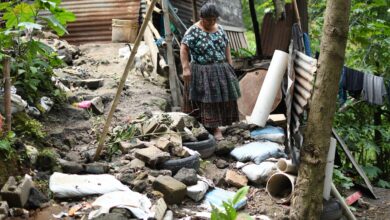Covid-19: How dangerous are its mutations?
The variants of the coronavirus not only put the health system on alert but also the effectiveness of the new vaccines.

The emergence of the variants worries the scientific community regarding the possible change in behavior in the symptoms and the different groups according to age. Photo: Unsplash
LatinAmerican Post | Brandon Martínez Salazar
Listen to this article
Leer en español: Covid-19: ¿Qué tan peligrosas son sus variantes?
The Sars-Cov-2 does not give truce, because when the quarantines were established during the pandemic they were done in order to mitigate the spread of the virus to avoid deaths in the risk population and that the health systems don't collapse before the imminent peaks. However, Covid-19 seems to be challenging humanity in its progressive evolution in different mutations that have emerged in recent months.
Of course, the development of vaccines has been a great relief for the countries because this will make it possible to put an end to the social and economic crisis that has been unleashed for about a year. Although they have shown initial efficacy, there is still a long way to go to investigate and prove whether the vaccines are really fully effective against the new strains . It is important to take this into account because the emergence of the mutations worries the scientific community regarding the possible change in behavior in the symptoms and the effect to different groups according to age.
British variant
In November 2020, the United Kingdom experienced a critical episode due to the emergence of a new variant scientifically known as B.1.1.7, which includes 23 mutations compared to the original virus. This set off alarms across England, as hospitalizations, had increased dramatically. The European country had to return to strict restrictions to lower infection rates in the country.
South African variant
In October 2020 in the Eastern Cape province of South Africa, a sudden wave of Covid-19 began and put health authorities on alert. The virus was found to have a new clustered mutations known as 501Y.V2 .
Brazilian variant
In Manaus, Brazil, the coronavirus crisis reached its most critical point on January 15, 2021 when hospitals collapsed and ran out of oxygen , generating great panic in the region. In that country, three variants have emerged that have been worrying the health system: K417N, E484K and N501Y .
These evolutions of the virus have been the subject of rigorous studies, since it has been determined that they are potentially infectious and, presumably, they may be affecting with greater signs of severity in young people.
Read also: How does gender-based violence affect women's mental health?
How dangerous are these variants?
The scientific community is investigating the behavior of the new variants in order to determine how lethal they are, and how effective the new vaccines can have on them. However, there are four points that open the door to the seriousness of the matter :
- Higher rate of hospitalizations: It is the main factor that something is happening with the virus. The increase in healthcare centers has been followed by deaths. In the first place, the authorities seek to make sure that this increase is not the result of the reduction in confinement restrictions , if that is not the cause, it is presumed that there is a new behavior in the virus.
- Reinfections: Although it has been considered that immunity to the virus after being infected is temporary , it should be taken into account that the sudden increase in reinfections of people who have overcome Covid-19 previously is an important signal to establish the circulation of a new variant .
- Symptom behavior: Although there is no conclusive information on the change in symptoms and lethality in the variants mentioned above, it is important to be careful at this point because they do present as more contagious viruses. Therefore, when there is a higher viral load, more serious conditions in the disease are possible.
- Change of group of infected: It is known that the risk groups are elderly and those who have some comorbidity. However, children and young people begin to experience symptoms with greater severity, this means that there are new mutations that are generating a bigger impact on the immune system of this population. So far, there is no evidence of higher lethality , but it does assume that the new variants could be being a bit more aggressive.
Given all this, the question remains: Can vaccines act efficiently against new groups of mutations?




